
Charles Emmanuel III was Duke of Savoy, King of Sardinia and ruler of the Savoyard states from his father's adbication on 3 September 1730 until his death in 1773. He was the paternal grandfather of the last three mainline kings of Sardinia.
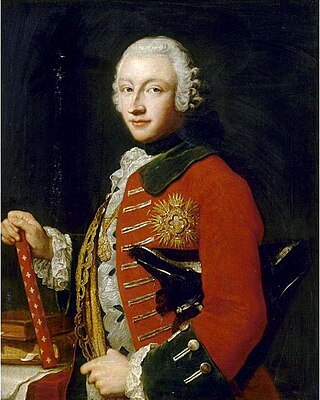
Victor Amadeus III was King of Sardinia and ruler of the Savoyard states from 20 February 1773 to his death in 1796. Although he was politically conservative, he carried out numerous administrative reforms until he declared war on Revolutionary France in 1792. He was the father of the last three mainline Kings of Sardinia.

Victor Emmanuel I was the Duke of Savoy, King of Sardinia and ruler of the Savoyard states from 4 June 1802 until his reign ended in 1821 upon abdication due to a liberal revolution. Shortly thereafter, his brother Charles Felix ascended the throne as the new King of Sardinia. Victor Emmanuel was the son of King Victor Amadeus III of Sardinia and his wife, Maria Antonia Ferdinanda of Spain. In 1789, he married Maria Theresa of Austria-Este, with whom he had seven children, including the future Empress of Austria. He was the King of Sardinia during the Napoleonic Wars, where he regained Piedmont after Napoleon's defeat in 1814.
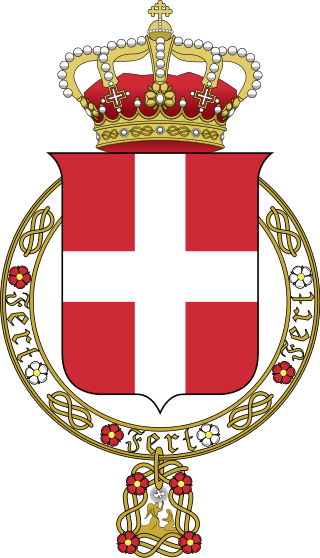
The House of Savoy is an Italian royal house that was established in 1003 in the historical Savoy region. Through gradual expansions the family grew in power, first ruling a small Alpine county northwest of Italy and later gaining absolute rule of the Kingdom of Sicily. During the years 1713 to 1720, they were handed the island of Sardinia and would exercise direct rule from then onward.
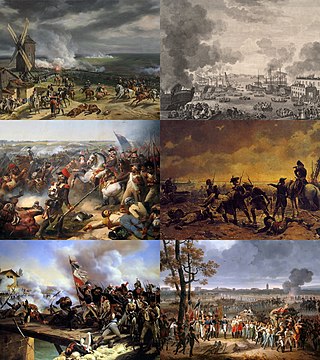
The War of the First Coalition was a set of wars that several European powers fought between 1792 and 1797, initially against the constitutional Kingdom of France and then the French Republic that succeeded it. They were only loosely allied and fought without much apparent coordination or agreement; each power had its eye on a different part of France it wanted to appropriate after a French defeat, which never occurred.
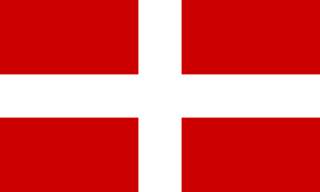
The Duchy of Savoy was a territorial entity of the Savoyard state that existed from 1416 until 1847 and was a possession of the House of Savoy.

The history of early modern Italy roughly corresponds to the period from the Renaissance to the Congress of Vienna in 1814. The following period was characterized by political and social unrest which then led to the unification of Italy, which culminated in 1861 with the proclamation of the Kingdom of Italy.
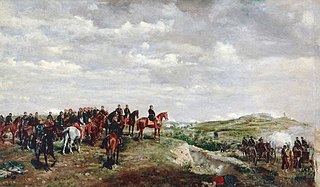
The Second Italian War of Independence, also called the Sardinian War, the Austro-Sardinian War, the Franco-Austrian War, or the Italian War of 1859, was fought by the Second French Empire and the Kingdom of Sardinia against the Austrian Empire in 1859 and played a crucial part in the process of Italian Unification.

The Italian campaigns of the French Revolutionary Wars (1792–1801) were a series of conflicts fought principally in Northern Italy between the French Revolutionary Army and a Coalition of Austria, Russia, Piedmont-Sardinia, and a number of other Italian states.

The Republic of Alba was a revolutionary municipality proclaimed on 26 April 1796, in Alba, Piedmont, when the town was taken by the French army. The municipality had a very short life of only 2 days because, with the Armistice of Cherasco on 28 April 1796, King Victor Amadeus III of Sardinia was given back the civil control of all Piedmont.
The Subalpine Republic was a short-lived republic that existed between 1800 and 1802 on the territory of Piedmont during its military rule by the French Consulate.
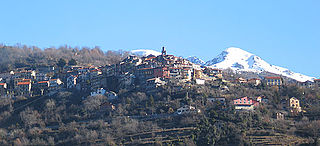
Belvédère is a commune in the Vésubie valley north of Nice in the Alpes-Maritimes department in southeastern France. The village of Belvédère is located at the entrance of the Gordolasque valley on the edge of the Mercantour National Park.
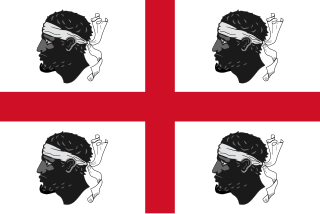
The Kingdom of Sardinia, also referred to as the Kingdom ofSardinia-Piedmont, Sardegna and Corsica or Piedmont–Sardinia as a composite state during the Savoyard period, was a country in Southern Europe from the late 13th until the mid-19th century; officially 1297 to 1768 for the Corsican part of this kingdom.

The Second Battle of Saorgio was fought from 24 to 28 April 1794 between a French First Republic army commanded by Pierre Jadart Dumerbion and the armies of the Kingdom of Sardinia-Piedmont and the Habsburg monarchy led by Joseph Nikolaus De Vins. It was part of a successful French offensive designed to capture strategic positions in the Maritime Alps and Ligurian Alps, and on the Mediterranean coast. Tactical control of the battle was exercised by André Masséna for the French and Michelangelo Alessandro Colli-Marchi for the Coalition. Saorge is located in France, about 70 kilometres (43 mi) northeast of Nice. At the time of the battle, the town was named Saorgio and belonged to Piedmont.

The Piedmontese Republic was a revolutionary, provisional and internationally unrecognized government established in Turin between 1798 and 1799 on the territory of Piedmont during its military rule by the French First Republic.
The Armistice of Cherasco was a truce signed at Cherasco, Piedmont, on 28 April 1796 between Victor Amadeus III of Sardinia and Napoleon Bonaparte. It withdrew Sardinia from the War of the First Coalition and handed over Alessandria, Coni and Tortone to Republican France. Sardinia also handed over supplies and munitions to France and allowed its troops free passage through Piedmont. It was followed by a full peace treaty signed in Paris the following 15 May, in which Sardinia handed over the county of Nice, the duchy of Savoy, Tende and Beuil to France, as well as guaranteeing free passage through its remaining territory for French troops.

The Regiment "Nizza Cavalleria" (1st) is a cavalry unit of the Italian Army based in Bellinzago Novarese in Piedmont. The regiment is the reconnaissance unit of the Alpine Brigade "Taurinense". The regiment is named for the County of Nice in France, which makes the regiment, along with the Regiment "Savoia Cavalleria" (3rd), one of two Italian Army units named for a French region, which once was part of the Kingdom of Sardinia.
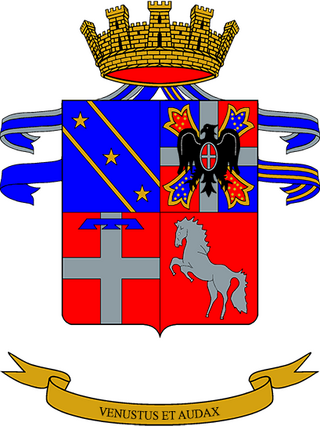
The Regiment "Piemonte Cavalleria" (2nd) is a cavalry unit of the Italian Army based in Villa Opicina in Friuli-Venezia Giulia.The regiment is the reconnaissance unit of the Alpine Brigade "Julia".

The Regiment "Genova Cavalleria" (4th) is a cavalry unit of the Italian Army based in Palmanova in Friuli-Venezia Giulia. The regiment was formed on 1 August 1821, with troops of the Regiment Dragoons of the King, who had remained loyal during the revolt in Piedmont in spring 1821 and were retained in service after the Regiment Dragoons of the King was disbanded on 1 August 1821. In 1871, when the Royal Italian Army's cavalry regiments were numbered according to their seniority, the regiment was numbered as if founded in 1821 and thus the fourth oldest by seniority. Later the Royal Italian Army allowed the regiment to inherit the traditions and honors of the Regiment Dragoons of the King, which today makes the regiment the oldest Italian Army cavalry regiment and the army's only unit, whose anniversary commemorates a pre-Risorgimento event. The regiment is also the Italian Army's highest decorated cavalry regiment and today assigned to the Cavalry Brigade "Pozzuolo del Friuli" as the brigade's reconnaissance unit.

The Kingdom of Sardinia denotes the Savoyard state from 1720 until 1861, which united the island of Sardinia with the mainland possessions of the House of Savoy. Before 1847, only the island of Sardinia proper was part of the Kingdom of Sardinia, while the other mainland possessions were held by the Savoys in their own right, hence forming a composite monarchy and a personal union which was formally referred to as the "States of His Majesty the King of Sardinia". This situation was changed by the Perfect Fusion act of 1847, which created a unitary kingdom. Due to the fact that Piedmont was the seat of power and prominent part of the entity, the state is also referred to as Sardinia-Piedmont or Piedmont-Sardinia and sometimes erroneously as the Kingdom of Piedmont.


















